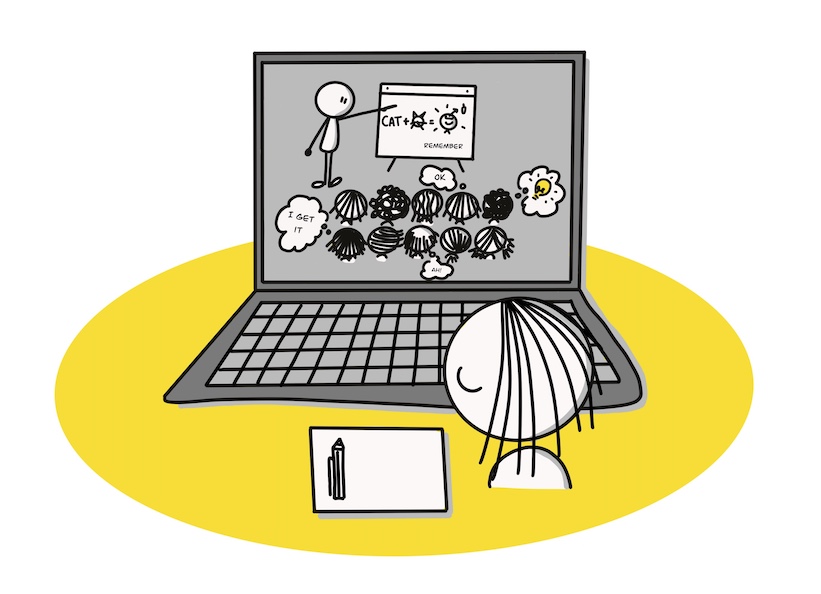Five reasons to use drawing in the classroom

In addition to making education fun and engaging, there are many more reasons to use drawing in the classroom. In this blog, I will highlight some of these reasons.
1. A Drawing provides structure for teachers and students
A drawing can serve as a framework to hang new knowledge on. It can provide structure to the lesson, as well as to the content of a specific theme or topic.
2. Drawing makes lessons clear and to the point
In a drawing, there is little space for unnecessary details. Only what is essential (what the teacher wants to convey or what the student picks up) is included in the image. This selection happens naturally when drawing “on the spot” during the lesson. It creates a clear distinction between the main points and secondary information. Additionally, it allows the teacher to gain a clear understanding of the student’s knowledge (whether the student’s image is complete or overly detailed).
3. Drawing provides an overview
Imagine a history teacher saying, “Create a large visual of ‘The Arab Spring’ depicting everything that happened.” This forces students to actively engage with the learned information and create a logical overview of what they have learned. Research has shown that not only what is drawn but also WHERE it is drawn is stored in memory. Most people can easily recall a visual, making it easier to remember the overall overview.
4. Information is better retained
There are several reasons why information is better retained through drawing, and I will describe a few of them:
- Combining words and images activates both the left and right hemispheres of the brain, engaging both sides in processing the information.
- People have different learning styles determined by their preferred modalities, as described by NLP (Neuro-Linguistic Programming). Modalities refer to the way information is filtered, processed, and stored. Five basic modalities are recognized: visual (sight), auditory (sound), kinesthetic (touch), olfactory (smell), and gustatory (taste). In classroom learning, three modalities are particularly relevant: visual, auditory, and kinesthetic. By presenting information verbally and visually, you engage two important modalities that reinforce each other. When students also draw themselves, they involve the third significant modality: kinesthetic, processing and storing information through movement and touch.
- When a student translates verbal information from a teacher into their own visual representation, they connect new information to existing mental images. This connection between the new and familiar acts as a bridge to the long-term memory, making it easier for the new information to stick.
5. Drawing stimulates students
A teacher who draws captures attention, piques curiosity, and actively involves students. Students who draw and actively engage with the material are less likely to be distracted from what they are working on. Additionally, drawing is a playful and refreshing way to approach sometimes dull subjects. Dry material comes to life, gains color, and immediately forms an image.
Draw your message helps you to increase the impact of your communication. Simple, expressive drawings visually convey what you communicate. Many people refer to this as ‘business drawing’ or ‘visual communication’. Draw your message teaches you how to say more than a thousand words with a single picture. We do this by providing training and workshops in business drawing. If you prefer a book in your hands, check out our book Conversations visualized.
